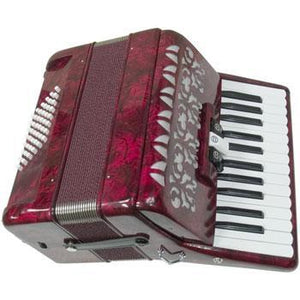

This event would be ideal for B/C box players who already play melodies on the treble side and are just starting in learning to play the bass side of the instrument. The event is September 1, 2021, starting at 5:00 PM Pacific time. I’ll be teaching my B/C box bass and chord arrangement of the popular reel "Over the Moor to Maggie". Hopefully your book will be a great extra resource as I progress. I am also learning a lovely tune from Sardinia by ear and experimenting with the basses accompaniment and that's great fun. I am only practising melodies on the BC at the moment and was a little perplexed about adding the basses as You come across conflicting views on this, even to the extent that some Irish players ignore them.

If I practise the Morris tunes on the C row the basses are easy to pick up with enough practice. I started on a one row box in the key of C and began learning some Morris style tunes like Winster Gallop but I was keen to get into Irish music so switched to a two row BC box with a Paolo Soprano bass layout. I have only just started playing but I feel this will be useful to me if not immediately then further down the line. The tutorials are based on annotation of standard music notation for the tunes, so unfortunately, they might not be of much help for someone who only learns entirely by ear. The idea here is that by initially learning by following along with rote arrangements, you can get the feel of playing them in your body, and then begin to bring them into your own playing. When I was learning to play the basses, I found it hard to find this kind of information in any tutorials, so I decided to write my own for other players. Quote from: Michael Eskin on August 19, 2021, 06:15:32 PM It's been a while since I posted about this, but I have a free, tip-supported, PDF-format book of 51 traditional Irish session tunes transcribed for B/C box that include box-specific chords annotation for a typical 8-bass instrument. One could easily add to what I've notated to add playing the bass buttons on the beats, in my experience, it's easier to add than to take away bass/chords once you've got the whole feel of playing the bass in the body. That's absolutely lovely as well, just not what I've decided to focus on. It's a little sparser than John's and I think has a nice lift as well while not being the "opportunistic/syncopated" style some of the more modern players are using. My style is a variant on his style I've heard other players use that I find quite appealing where you only play the bass note generally when the chord changes and then stick to the chord buttons on the offbeats between. One big difference between his playing and my annotations is that he generally also plays the bass note on every beat and the chords on all the off beats, whether or not the bass changes.

My style of backing is influenced primarily by the playing style of John Whelan, who I've been working with helping to produce his online events and workshops for the past year.
Free bass accordion method how to#
Chris Smith, published by Mel Bay that teach, by example, how to listen for keys and modes and the changes in the tunes.

To learn to understand and learn backup, I recommend that players seek out other excellent resources like "Celtic Backup for All Instrumentalists" by Dr. That's a different skill from physically playing the basses along with the melody. My book doesn't teach how to figure out the chords that work with the tunes. Then there is issue that not all the chords are available in both directions on the typical bass setup, so there are a lot of challenges both musically and physically. You have to know how to play the melody, and you have to also know how to back Irish music, which is it's own set of skills based on hearing the keys and modes. I don't know how it's taught to kids, but the bar for being able to back tunes is pretty high, particularly if you want to be able to back any tune you already are able to play the melody with proper chords and not just limit yourself to some fixed arrangements.


 0 kommentar(er)
0 kommentar(er)
